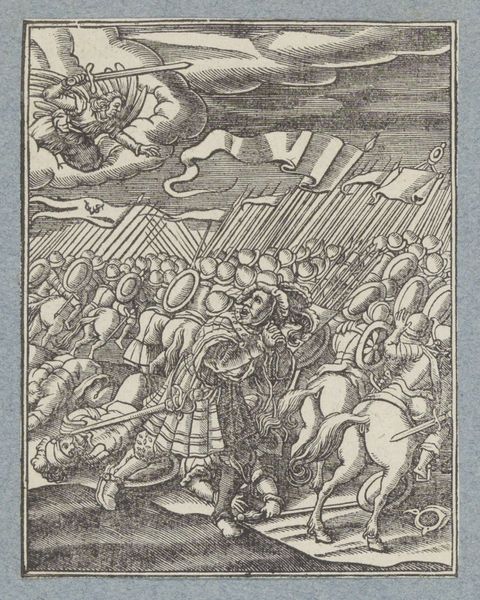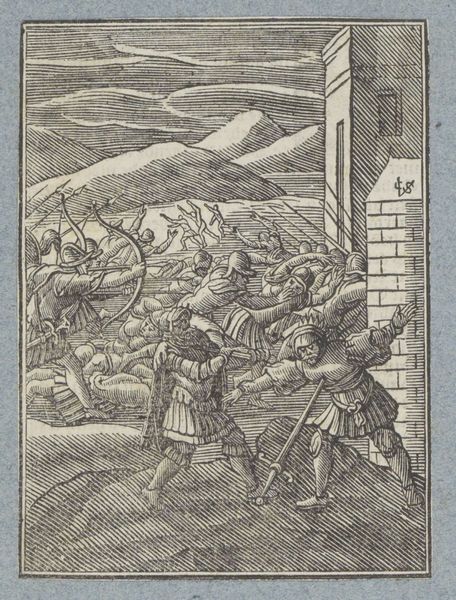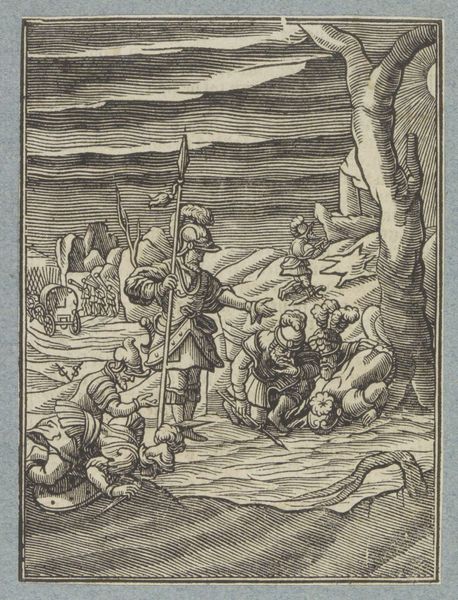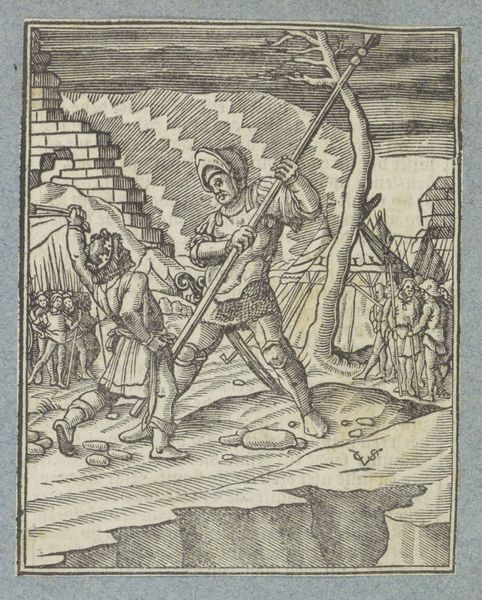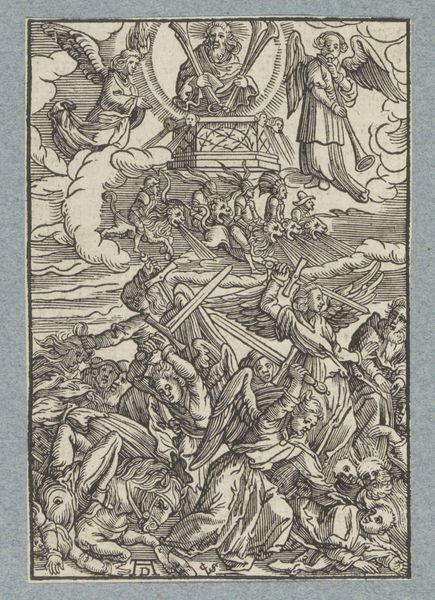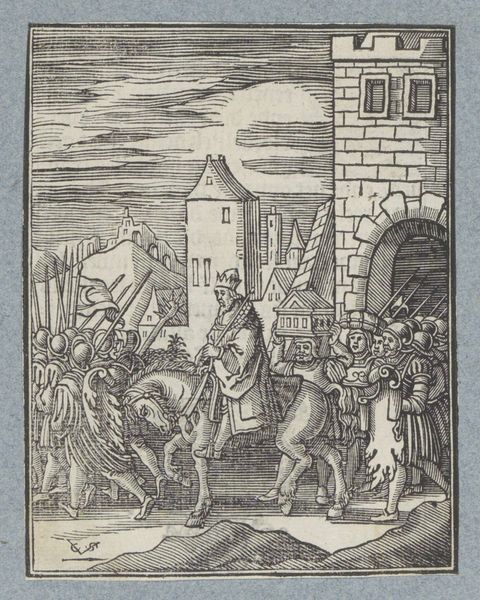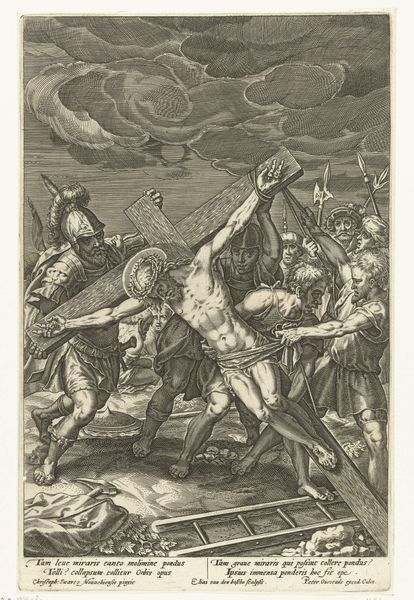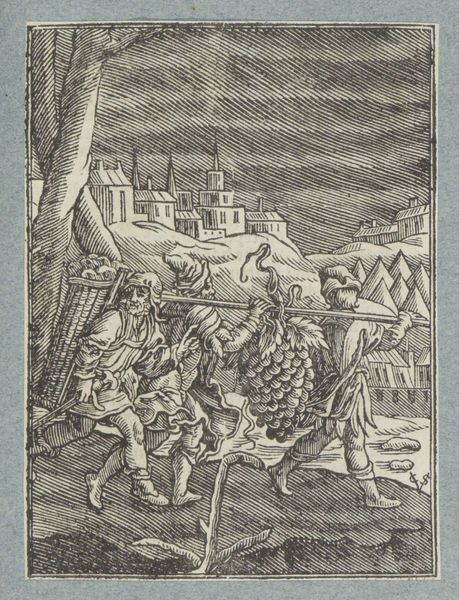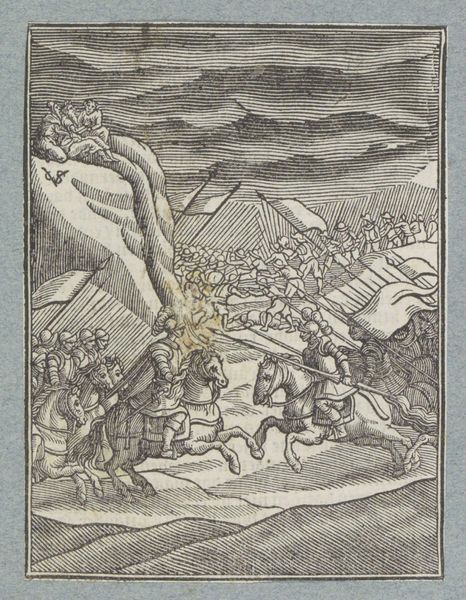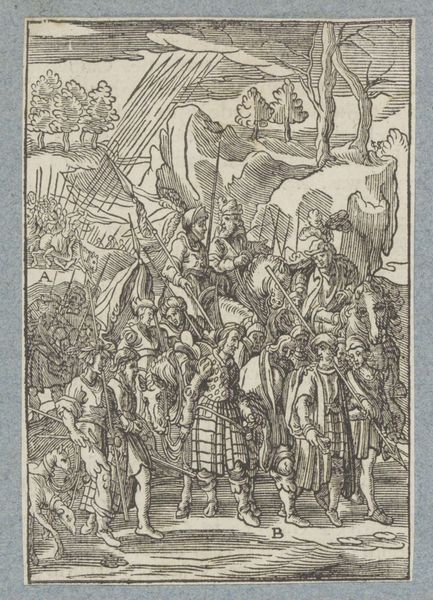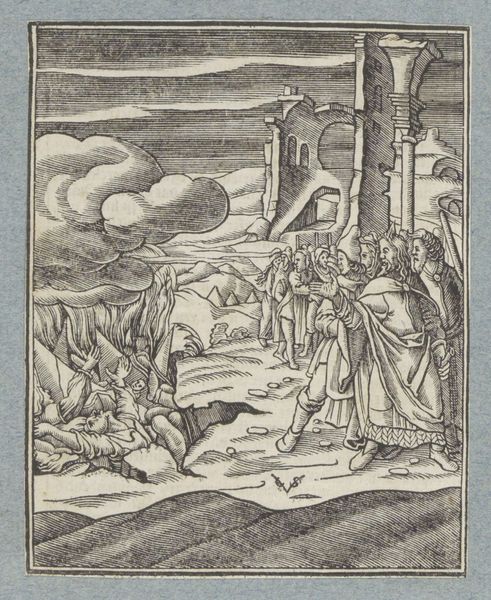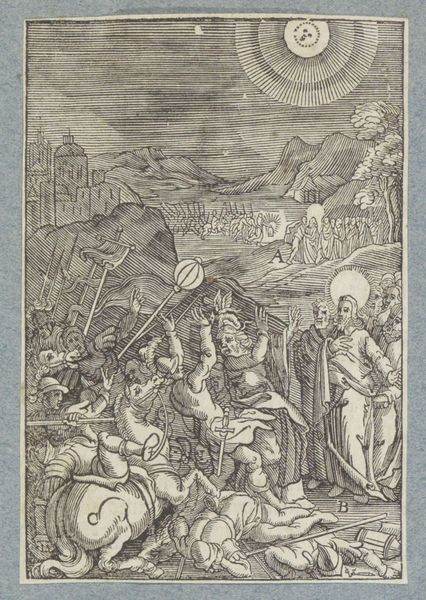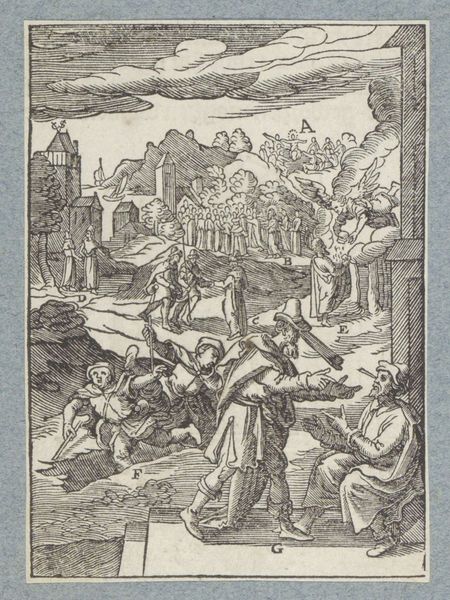
Jozua als legeraanvoerder van Israëlieten met lichamen van de verslagen koningen 1645 - 1646
0:00
0:00
print, engraving
#
medieval
#
narrative-art
# print
#
figuration
#
line
#
history-painting
#
engraving
Dimensions: height 109 mm, width 84 mm
Copyright: Rijks Museum: Open Domain
Curator: Looking at this print by Christoffel van Sichem II, made around 1645, one is immediately struck by its narrative force. Titled "Jozua als legeraanvoerder van Israëlieten met lichamen van de verslagen koningen," or "Joshua as leader of the Israelites with the bodies of the defeated kings," it presents a biblical scene of conquest. Editor: The eye is drawn to that central, imposing figure, towering over the slain enemies. It feels very decisive and visually arresting. What really stands out to me is the way Sichem used line work; look at those dense, parallel lines used to suggest storm clouds and evoke such a somber, even tragic atmosphere. It gives an air of fateful finality, doesn't it? Curator: Absolutely. The piece comes during a period of the rise of printmaking as a potent medium for disseminating both religious and historical narratives. This imagery connects to a wider context of Dutch engagement with Old Testament stories, often as allegories for their own struggles and triumphs. The corpses lying at Joshua's feet certainly suggest a grim cost of leadership. Editor: And those corpses carry such symbolic weight! Van Sichem's engraving speaks to a recurring theme: the cyclical nature of power, victory, and the inevitable human cost. I see it echoing throughout history, that archetype of the victorious leader amidst the fallen. The arrangement of bodies even feels almost ritualistic. Curator: True, one could argue that the almost formulaic arrangement, though typical for the time, detracts a little from the immediacy of suffering. Yet the image, precisely because of its wide distribution as a print, amplified the themes of divinely sanctioned power, with potentially controversial religious undertones when looking at the social structures of 17th century Netherlands. Editor: The composition isn’t particularly naturalistic, yet that stiffness enhances the symbolism. Joshua almost seems to float above the carnage, a divinely appointed figure separate from the mortal realm. It is more idea than image. Looking at the bodies arranged almost symmetrically is, I think, Sichem trying to make this accessible. Curator: The ability to replicate this scene and distribute the copies surely served as a constant reminder. These biblical images offered lessons and reinforced social hierarchies during a time of massive cultural shifts. I suppose we could see how the message still applies to our present time as well, especially in a time of turmoil and geopolitical challenges. Editor: Ultimately, this work highlights how symbols and stories embedded in images can transcend time, echoing across centuries to stir the soul and stimulate the mind.
Comments
No comments
Be the first to comment and join the conversation on the ultimate creative platform.

